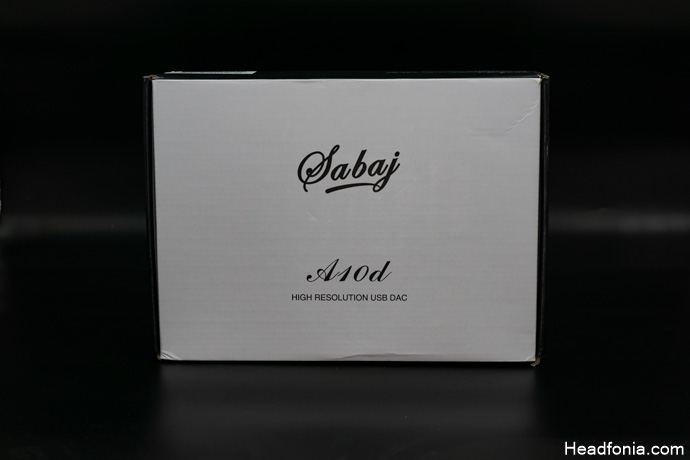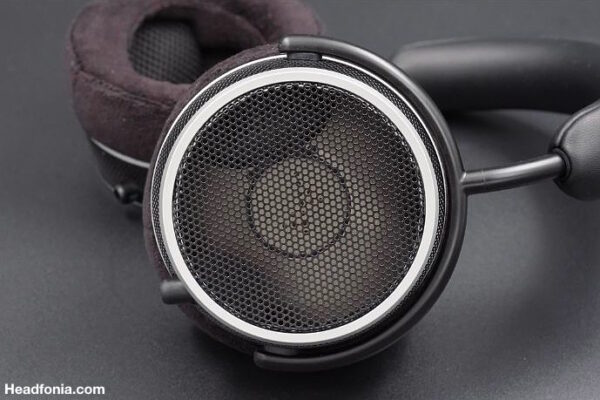In this article, we review the new Sabaj A10D 2022 DAC, PRE & Headphone AMP. It costs $299 USD .
Disclaimer: Hifi-Express sent us the Sabaj A10D for this review, free of charge. We thank them for this opportunity. As always, I am here to honestly convey my thoughts about the product to you.
Sabaj
Sabaj is a company that manufactures DACs & AMPs under the wing of the same parent company as SMSL, one of the leading manufacturers in the industry. Similar to SMSL, Sabaj also has a wide range of desktop products including power amplifiers.
Sabaj A10d 2022
Sabaj A10d’s dedicated web page can be found here. The A10d is a high-performance DAC & AMP combo that can decode PCM up to 32bit-768kHz and DSD up to DSD512, natively via XMOS’ XU208 USB Controller. The A10d is powered by ESS Technology’s widely used, premium-tier chip, the ES9038Q2M in dual configuration. The amplification stage is similar to what we have seen before, ES9038Q2M is accompanied by two OPA1612s per chip. A very safe, effective combo. The A10d fully supports the latest arsenal of wireless codecs, including Sony’s 990 kbps-capable codec, the LDAC.
Features
- x2 ESS Technology ES9038Q2M DACs
- x4 OPA 1612 OP-AMPs
- Low-Noise SMPS PSU
- XMOS XU208 USB Controller (up to DSD512, PCM 768kHz)
- Bluetooth 5 + LDAC / AAC / SBC / APTX / APTX LL / APTX HD Codec Support
- Remote Control Support, OLED B&W Screen, Rich I/O
- ≈ 1W @32Ω HPA Power

Packaging & Accessories
The Sabaj A10d comes in a medium-sized cardboard box. The box design is simple and resembles the packaging of SMSL units, unsurprisingly. Sabaj did not list any features of the A10d anywhere on the box. There is, however, a sticker with the unit’s name and barcode on the side.
The package content is as you would expect. You get everything you need to use the device straight away. Sabaj provides a C13 power cable, a white USB-C cable, a remote, and an antenna. Apart from those, we get a user manual and a QC-check card. The accessory quality and the inclusion of a remote are good.

Design & Build Quality
Measuring 20 x 17 x 6 centimeters, the A10d will occupy some space on your desk. The device weighs about 1.2 kilograms and therefore is not very portable. The device is available in silver color only. The device looks like a miniaturized version of big, single-block stereo amplifiers with this unique design. The looks are very subjective but I really like it, especially if you plan to pair it with an A20a power amplifier. Let’s take a closer look at the design language of Sabaj.
Sabaj aimed for an elegant but chic design with sharp corners, a contrasting color scheme, and a smooth, anodized finish. There are 2 handle-like pieces on the front of the product, it reminds me of server racks and high-end huge stereo amplifiers. I can easily say that Sabaj has a different design language compared to SMSL and Loxjie and I think that’s good. Sabaj has more elegant lines, especially their 2022 line-up. Loxjie has a more ‘industrial’ design and SMSL has a little bit of everything.
Back to the design, the unit has four pieces of color-matched aluminum feet with silicone anti-vibration pads. The sides of the product are covered with wave-shaped aluminum pieces that Sabaj says help cool the unit during operation. On the front panel, we have a white font LED screen, a volume knob/button, a 4.4mm BAL HPO, and a 6.3mm UNBAL HPO.
The build quality of the device is very good, the anodized finish, and the full-aluminum chassis feel very rigid and durable. The chassis is CNC precision milled as usual and I couldn’t find any milling defects or assembly issues. The display looks nice and it is easy on the eyes. Let’s talk about the device layout. The layout is simple and easy to remember. Apart from the 6.3mm HPO and 4.4mm HPO, all of the I/O options are located on the rear side of the unit. From left to right, we see balanced XLR outputs, unbalanced RCA outputs, a coax input, an optical input, a USB-C input, and lastly a Bluetooth antenna socket. As for power delivery, the A10d uses a C13-type connector and cable.
Overall, I have to say I’m pleased with Sabaj’s 2022 design overhaul. I took a look at the older units and they looked very plain and boring.
I believe this new design matches the great performance the new units offer. I would very much like to see bigger, better units with the same design lines and aesthetics. Good job, Sabaj!

Controls & UI
The A10d comes with a white font LED display that provides information on the active sample rate, volume level, active input type, gain, etc. By default, the main screen displays the active sample rate during playback.
As for controls, the A10d can be controlled with the front volume knob/button without the need for a remote, however, the included remote makes it much easier to control the device and navigate between the available menus. By pressing on the volume knob, you can navigate between available options and turn the knob to set the desired value, and press once more to apply. It is easy and straightforward.
Let’s go over the available settings for the device. The first menu we see is the input selection menu. You can toggle between the inputs here. After that, we see the HP/LINE-OUT mode menu. This is especially useful if you are planning to use the DAC stage of the A10d with your active monitors. We see the gain settings next, there are 2 options available: Low (+0dB) and High (+10dB) gain. As for filter options, there are 7 filters to choose from. Manufacturers tend to put the best (most neutral) filter as the default so I rarely feel the urge to meddle with this option. There is a DPLL option to reduce jitter and increase compatibility. Sabaj also included the option to select between UAC1 and 2, this too improves the compatibility of the unit with various devices, such as gaming consoles. Lastly, the screen brightness is adjustable.
Overall, it is very nice to have the option to control the device fully via the volume knob, usually, we see some kind of limitation here but that was not the case with the A10d. The A10d is plug & play in UAC1 mode and it can operate driverless. UAC2 mode requires drivers but enables DSD and higher sample rates such as 384khz.

Power Delivery
Sabaj A10d features x4 OPA1612 OP-AMPs (two for each DAC chip) and it can dish out around 1 watt of power into a 32-ohm load. The unit drives my Hifiman HE-R9 and Sennheiser 58X, easily without breaking a sweat. The unit does not get hot either. As for the output impedance, the values are perfectly fine. The XLR out has an impedance value of 100Ω and the HP outputs are nearly 0Ω. This means that it plays nicely with even the most sensitive IEMs out there on the market.
There is no hissing with sensitive IEMs in my inventory so you’re alone with your music and the black background. Although it is not as powerful as some of the offerings on the current market, it has plenty of power to drive the majority of the headphones available today.
The review continues on Page Two, after the click HERE or by using the jump below.
Page 2: Sound, Low, Mid, High, Bluetooth Capability, Technical Capability & Wireless Performance, Comparisons, Last Words









